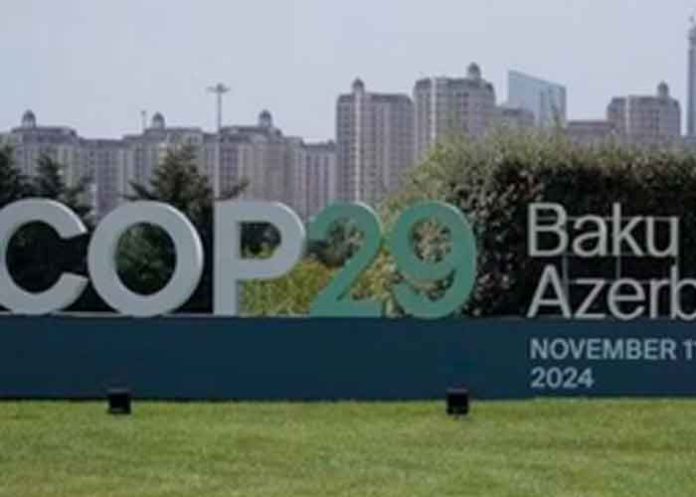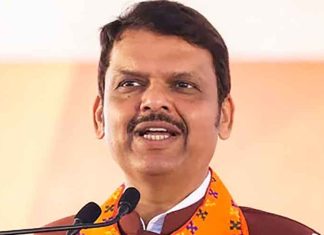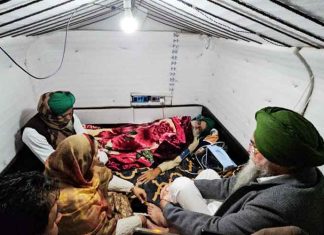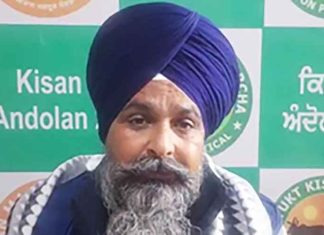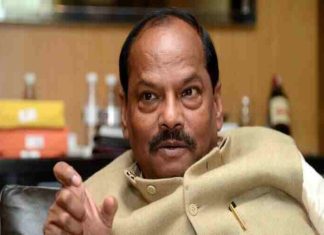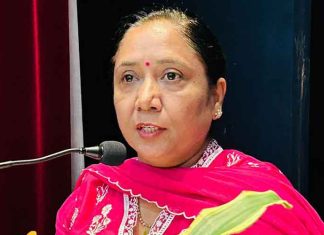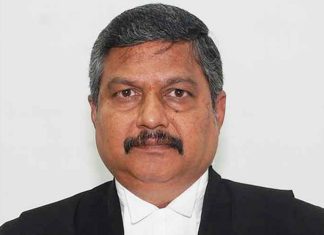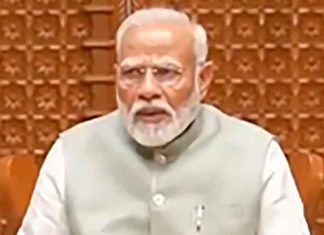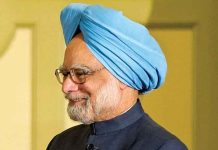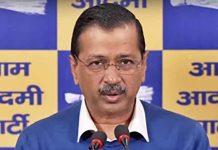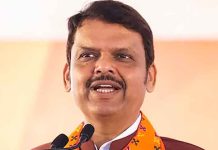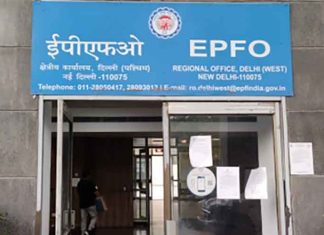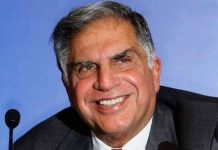New Delhi, Dec 1 2024-
As the 2024 meeting of the UN Climate Change Conference — known as COP29 — in Azerbaijan’s Baku, the world’s first oil town standing on the shores of the Caspian Sea, wrapped up, nearly 200 nations agreed to a new collective quantified goal on climate finance.
The new finance goal is to mobilise $300 billion per year by 2035 — a three-time increase over their current mandate of $100 billion — to support developing countries respond to climate change that demanded a ten-fold increase. For Simon Stiell, UN Climate Change Executive Secretary, the new finance goal is an “insurance policy for humanity”.
The G77 bloc, developing countries plus China, had firmly demanded $1.3 trillion by 2035 from historic emitters such as the US and the European Union (EU).
The $300 billion goal is not expected to happen immediately, but rather from 2035. There is also an agreement on a framework for carbon markets nearly a decade in the making.
Besides India’s fierce objection to the climate finance deal, small-island, vulnerable and least-developed nations believe there is continued considerable contestation of issues like the transition away from fossil fuels.
They say the talks were marred by a lack of transparency and inclusivity, with critical voices from vulnerable countries sidelined — a troubling reflection of the flaws in the global negotiation framework.
Without sufficient financing, developing nations will be forced to lower their mitigation ambitions in their 2025 Nationally Determined Contributions (NDCs). This funding gap will also severely undermine their ability to prepare for and respond to escalating losses and damages from climate disasters like floods, storms, and heatwaves.
At COP26, it was the “phasing down” of coal; at COP27 it was agreed to a historic Loss and Damage Fund; and COP28 delivered a global agreement to transition away from all fossil fuels in energy systems swiftly and fairly, triple renewable energy and boost climate resilience.
At COP29 increasing commitments to climate finance, the most anticipated outcome, was built on significant strides forward on global climate action at COP27.
The finance agreement comes as stronger national climate plans (or NDCs) become due from all countries next year. These new climate plans must cover all greenhouse gases and all sectors, to keep the 1.5 degrees Celsius warming limit within reach.
The two weeks of intense negotiations at COP29 amidst over 30,000 participants, including government officials, business leaders, and civil society representatives ended in overtime on November 24 with a mixed bag of accomplishments and setbacks on critical issues.
Operationalising carbon markets. A notable achievement during the summit was the progress made on carbon markets. After nearly a decade of work, countries have agreed on the final building blocks that set out how carbon markets will operate under the 2015 Paris Agreement, making country-to-country trading and a carbon crediting mechanism fully operational.
On country-to-country trading (Article 6.2), the decision of COP29 provides clarity on how countries will authorize the trade of carbon credits and how registries tracking this will operate. And there is now reassurance that environmental integrity will be ensured upfront through technical reviews in a transparent process.
On day one of COP29, countries agreed on standards for a centralized carbon market under the UN (Article 6.4 mechanism). This is good news for developing countries, including India, which will benefit from new flows of finance. And it is particularly good news for least-developed countries, who will get the capacity-building support they need to get a foothold in the market.
This mechanism, known as the Paris Agreement Crediting Mechanism, is underpinned by mandatory checks for projects against strong environmental and human rights protections, including safeguards that ensure a project can’t go ahead without explicit, informed agreement from Indigenous peoples. It also allows anyone affected by a project to appeal a decision or file a complaint.
Under the text agreed on Article 6.4, there is a clear mandate for the UN carbon market to align with science. It tasks the body to get this market up and running to consider the best available science across all work going forward.
The work on carbon markets doesn’t stop in Baku. The Supervisory Body setting up the new carbon crediting mechanism has been handed a long 2025 to-do list by Parties and will continue to be accountable to them.
Transparency on climate reporting: Transparent climate reporting made big strides forward in Baku, building a stronger evidence base to strengthen climate policies over time, and helping to identify financing needs and opportunities.
To date, 13 nations have now submitted their first Biennial Transparency Reports (BTR) — due from all nations by the end of the year.
Andorra, Azerbaijan, the European Union, Germany, Guyana, Japan, Kazakhstan, Maldives, the Netherlands, Panama, Singapore, Spain, and Turkey have led the way in transparent climate reporting, and set an example for others to follow.
In addition, all transparency negotiating items concluded successfully at COP29, with parties expressing their appreciation for the timely completion of the Enhanced Transparency Framework (ETF) reporting tools, the technical training, and the support provided to developing countries for reporting under the ETF that took place in 2024.
Mobilizing adaptation funds. COP29 was an important moment for adaptation, with the delivery of several key outcomes. The COP decision on matters relating to the least developed countries (LDCs) contains a provision for the establishment of a support programme for the implementation of National Adaptation Plans (NAPs) for the LDCs. Parties extensively discussed the second five-year assessment of progress to formulate and implement NAPs and will continue that in June 2025.
Is there still optimism and concerns about the efficacy of the annual UN climate summit?
Responding to the COP29 outcomes, Mariana Paoli, Global Advocacy Lead, Christian Aid, told IANS, “The process of submitting NDCs may seem like a dry and bureaucratic exercise, but in reality, it is the world re-wiring the entire global economy so that it can shift away from climate-wrecking fossil fuels to clean renewable energy. If we pull it off, it will be one of the most remarkable collective achievements in human history. But that energy transition has to be paid for, and there is currently a huge imbalance with most of the world’s money sitting in the countries of the global north and much less of it in the global south. Due to the weak outcome in Baku, there is a real danger that the next round of NDCs from the global south will not be as ambitious as they could be. Developing countries need the clarity that they will be receiving reliable grants to help pay for new clean energy infrastructure, as well as address the impacts of the climate crisis.”
For Mohamed Adow, Director of Power Shift Africa, the climate finance goal agreed in Baku was a necessary step forward but wasn’t sufficient for achieving the Paris Agreement goal of limiting global heating to 1.5 degrees. “It is therefore important for COP30 in Brazil to enhance this goal. Both the amount of finance needs to be increased and the delivery timeline should be brought forward. Ultimately we need to see rich countries working to reform the international economic system so it can be used better to help developing countries contribute to the global clean energy transition.”
Africa, the continent most affected by climate change, receives only two per cent of global climate finance, according to a UN report.
Explaining why we must junk the COP29 deal, Harjeet Singh, climate activist and Global Engagement Director for the Fossil Fuel Non-Proliferation Treaty Initiative, believes without sufficient finance, developing nations will have low-mitigation ambition in their updated national climate action plans in 2025. He said, “The outcomes of COP29 in Baku are a stark indictment of the global community’s failure to confront the climate crisis with the seriousness it demands. By committing a mere $300 billion annually by 2035, far below the $1.3 trillion requested by developing nations, wealthier countries have prioritized short-term profits over long-term survival. This grossly insufficient funding not only undermines global net-zero targets but also jeopardizes the capacity of developing nations to address their urgent needs, pushing the planet beyond a catastrophic three degrees Celsius of warming.”
Also, he said, COP29 failed to deliver a concrete plan to phase out oil, gas, and coal, even as developed nations continue to expand fossil fuel extraction.
India does not accept the goal in its present form, the country’s negotiator Chandni Raina told the final COP29 plenary. “Developed countries taking the lead for a mobilisation goal of a mere sum of $300 billion and that too to be only reached by 2035, that’s almost 11 years later, and that too from a wide variety of sources, so it would have to be private, it would have to be multilateral and there are large amounts of it that will be left for the developing countries to mobilise themselves. The goal is too little, too distant…we need to do it at 1.3 trillion per year till 2030,” she said.
Activists and civil society representatives hope Brazil, the host country for COP30 in November 2025, will deliver bold, transformative solutions, beginning with a renegotiated climate finance target that reflects the scale of the challenge and ensures equity and justice. (Agency)




